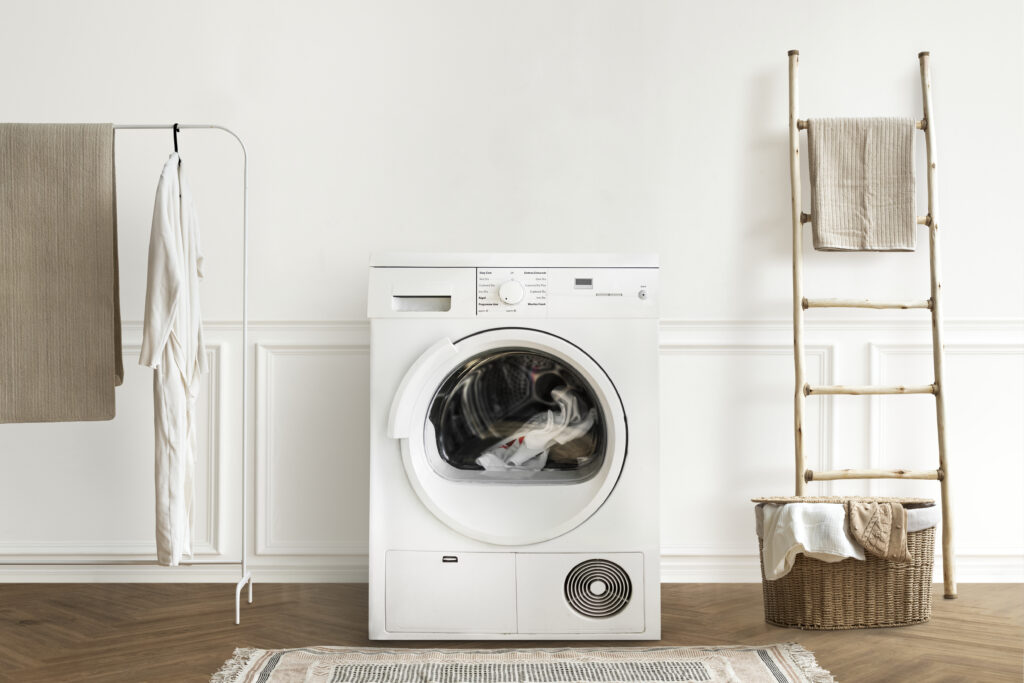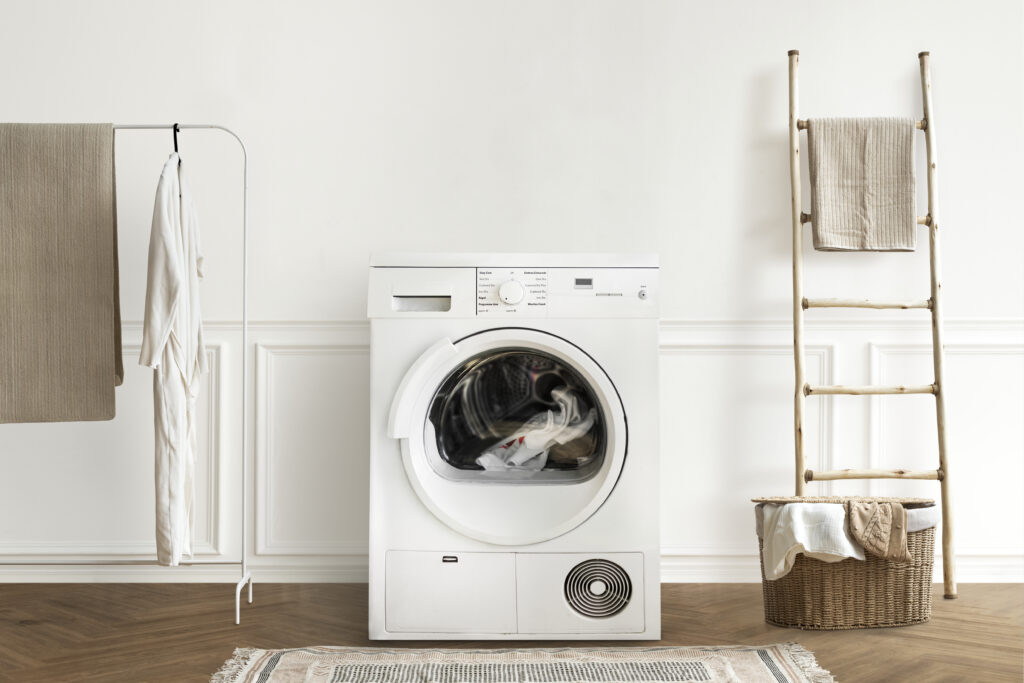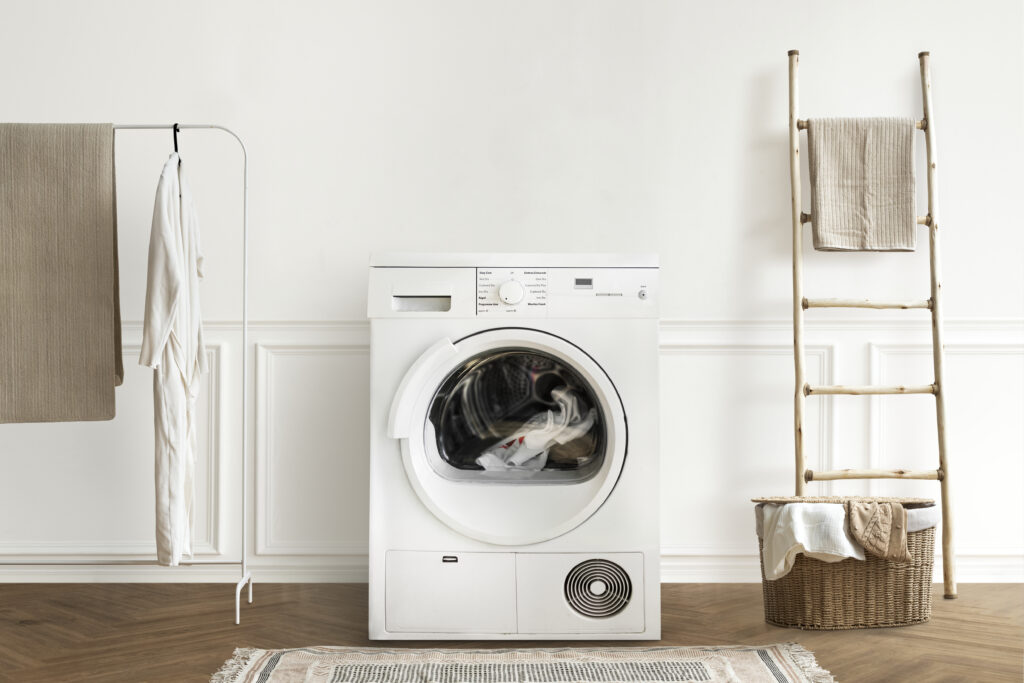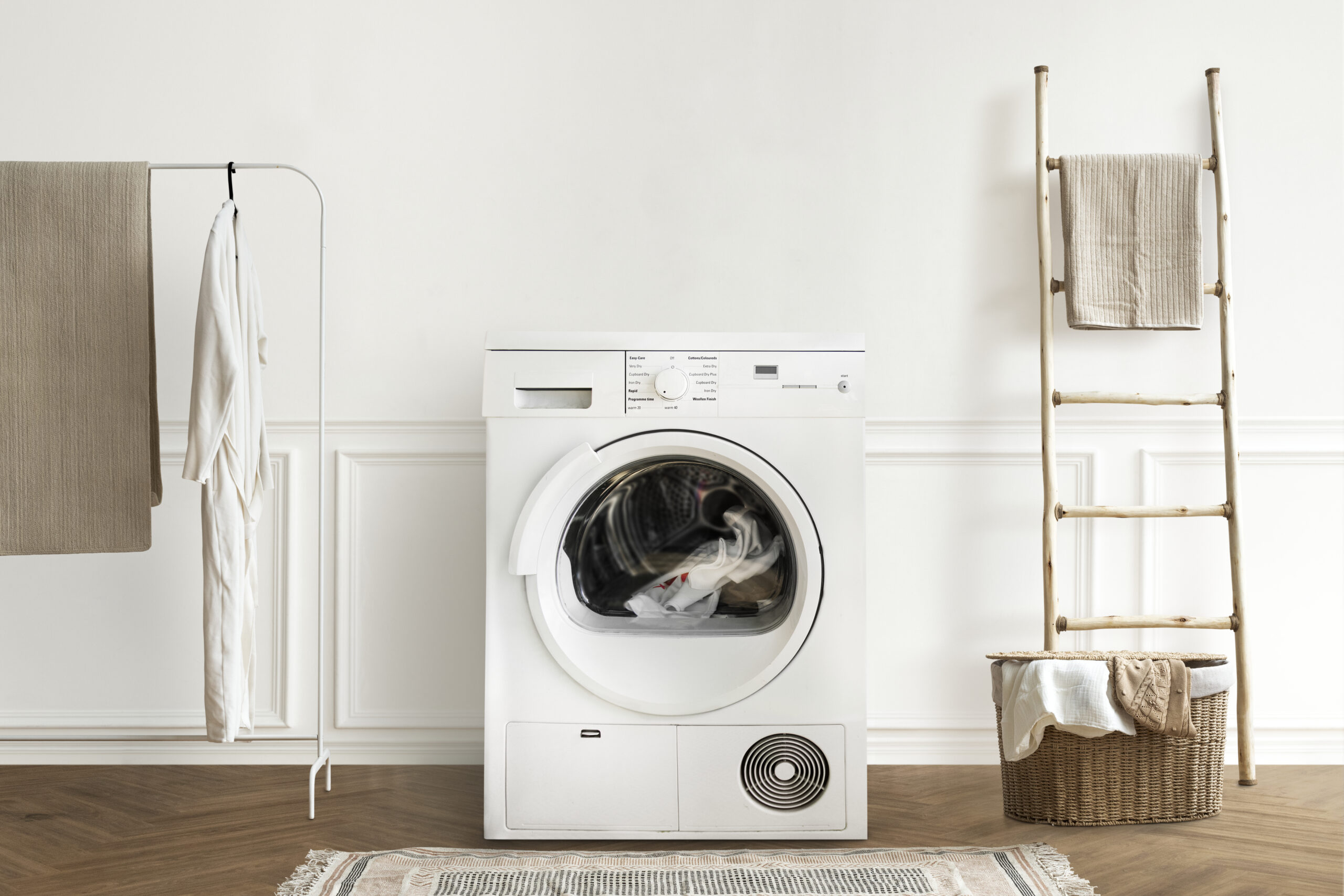Nothing is worse than discovering your clothes soaking in a tub of filthy water when you open your washing machine after a cycle. If your washer won’t drain, it can interfere with your laundry routine and, if left unattended, may result in water damage or other problems.
The good news? With a little troubleshooting and a few simple tools, many washing machine drain problems can be resolved at home. We’ll go over the main reasons why a washer doesn’t drain, how to fix a washer that won’t drain, and when to hire a professional in this comprehensive 2025 repair guide.

My washing machine won’t drain; why?
Understanding how to address washing machine drain problems is essential for effective laundry management.
A few common causes are typically the root of the issue when your washer stops draining:
A kinked or clogged drain hose
Pump filter blockage
A malfunctioning or obstructed drain pump
clogged sink drain or home standpipe
Broken door lock mechanism or lid switch
Problems with the control board or electrical system
Using the incorrect detergent or packing the washer too full
Let’s dissect these and walk through how to identify and resolve each problem.
Things You’ll Need:
Shallow tray or bucket
Towels
A screwdriver
Pliers
For electrical testing, a multimeter is optional.
A plumber’s snake or a flexible drain cleaning brush
♠️ Safety Tip: To prevent electric shock, unplug your washer before working on it.
Step 1: Examine the Drain Hose
Let’s begin with the simplest check:
Your washer should be moved away from the wall.
Examine the drain hose for any twists, kinks, or sharp bends.
Disconnect the hose from the washer and drain connections.
To find and clear clogs, run water through the hose or use a long brush.
Pro Tip: To avoid more drainage issues, replace brittle, cracked, or outdated hoses.
Step 2: Empty the Washer by Hand
If there is a lot of water in your machine:
Wrap towels around the washer’s base.
Open the access panel for the pump filter, which is often located at the front bottom.
Holding a shallow tray or bucket to catch the draining water, carefully unscrew the filter.
Any stuck debris, such as coins, lint, buttons, or hair ties, should be taken out and cleaned.
Tiny socks, pet hair, lint accumulation, and misplaced pocket items are typical discoveries.

✅ Clean the Drain Pump Filter in Step Three
A drain pump filter is a common feature of front-loading washers to capture debris:
Turn counterclockwise to remove the filter.
Run some water over it to clean it.
Look for more debris in the washer’s internal cavity.
Close the access panel firmly after replacing the clean filter.
Maintenance advice: For best results, clean the pump filter every four to six weeks.
Step 4: Examine the Drain Pump
If your washer isn’t draining even after cleaning the drain hose and filter:
Reinstall the machine’s plug.
Select a spin-only or drain cycle.
Check to see if the drain pump is operating.
The pump might be jammed if there is a hum but no water movement.
The pump may be burned out if you don’t hear anything.
Do-it-yourself Pump Inspection:
Depending on the model of your washer, remove the front or rear panel.
Find the drain pump.
Examine the pump housing for any obvious clogs.
To make sure the impeller moves freely, manually spin it.
To check the continuity of the pump, use a multimeter. If there is no reading, a replacement is required.
✅ Step 5: Examine the household drain or standpipe
Occasionally, the problem isn’t with your washer:
A gallon of water should be poured straight into the sink or standpipe where the washer drains.
The home drain is clogged if it backs up.
Fix: To remove the obstruction, use a drain cleaning tool or a plumber’s snake.
✅ Step 6: Examine the door switch or lid
If the lid or door switch is broken, washers will not spin or drain for safety reasons:
To test, open and close the lid firmly.
As it closes, listen for a clicking sound.
If there is no response or no click:
Take out the switch assembly.
To check continuity, use a multimeter.
If required, replace (usually $20 to $60).
✅ Step 7: Use the Right Detergent and Avoid Overloading
Poor drainage can result from using the incorrect detergent or doing too much laundry.
Avoid filling your washer to the brim. Observe the load size recommendations of the manufacturer.
For front-loaders, use HE (High-Efficiency) detergent.
Steer clear of excessive suds as they can slow drainage and confuse sensors.

When to Make a Professional Call
It’s time to hire an appliance repair specialist if you’ve tried every solution listed above and your washer is still not draining.
Telltale signs that you need a pro
Error codes that persist (5E, ND, OE, etc.)
loud humming or grinding sounds
obvious damage to the wiring or pump
After troubleshooting, the washer won’t turn on.
Burning smells or electrical problems
The average cost of repairs in the USA in 2025:
Replacement of a drain pump: $150–$350
Replacement of the control board: $250–$450
Diagnostic fees for technicians: $75–$125
How to Avoid Drain Issues in the Future
Every month, clean the pump filter.
Drain hoses should be inspected and cleaned every three to six months.
Don’t overdo it.
Before washing, check pockets for debris.
Make use of the appropriate detergent type and quantity.
Every month, run a cleaning cycle using washer cleaner tablets.
Pro Tip: To avoid leaks or kinks, replace the hoses in your washer every five years.
A Brief Review of Troubleshooting
Examine and clean the drain hose. Clean the pump filter and drain the washer by hand ✅ Check the drain pump’s functionality ✅ Examine your home’s standpipe ✅ Check the door/lid switch ✅ Steer clear of excessive suds and overloading ✅ If issues continue, contact a technician.
Concluding remarks
If ignored, a washing machine that refuses to drain could be an indication of more serious issues. Fortunately, with the help of this comprehensive 2025 repair guide, many problems are easy to identify and resolve on your own.
You can prolong the life of your appliance and keep your laundry routine operating smoothly by learning how to troubleshoot common drainage issues, do routine washer maintenance, and know when to call a professional.
Bonus Advice:
If your washer keeps displaying error codes when it’s having problems draining, look up the meanings of the codes online or in your user manual. Many brands, including Samsung, LG, and Whirlpool, include helpful diagnostic information directly in the code.

Leave a Reply